A RARE CLOISONNÉ ENAMEL AND GILT-BRONZE 'BUDDHIST LIONS' EWER16th century Of ovoid form with a high arched loop handle and serpentine spout, enamelled around the body with six Buddhist lions encircling two brocade balls tied with ribbons, amidst ruyi-head clouds interrupted by a small vase holding precious objects, all between a band of ruyi-head petals around the shoulder and lotus petals around the base, the neck, spout and base similarly enamelled with scrolling foliage. 22.2cm (8 3/4in) wide.Footnotes十六世紀 銅胎掐絲琺瑯獅子繡球穿花執壺 Although the lion is not native to China, its image has long been important to the repertoire of Chinese iconography. Lions were first presented to the Han court by emissaries from Central Asia and Persia, and the Chinese for lion (shi 獅) is thought to be derived from the Persian word šer. Lions were often depicted in stone statuary, symbolising protection and law, and from the Tang dynasty, appeared on decorative arts. The Buddha's teachings are often referred to as the 'lion's roar' in the sutras, indicating their power and nobility. Buddhist lions playing with a brocade ball became the most popular form of imagery for the lion during the Ming dynasty. For a very similar decoration of Buddhist lions, see a cloisonné enamel dish, 16th century, illustrated by C.Brown, Chinese Cloisonné: The Clague Collection, Phoenix Art Museum, 1980, pp.22-23, pl.3. Compare with a very similar cloisonné enamel ewer and cover, 16th century, also decorated with lions, illustrated by H.Brinker and A.Lutz, Chinesisches Cloisonné: Die Sammlung Pierre Uldry, Zurich, 1984, no.98. The author notes that 'no prototype in porcelain [of this shape] exists, but other examples are known in cloisonné enamel. These ewers, sometimes decorated with lions, sometimes with scrolling lotus, possibly served as ritual vessels in Buddhist or Lamaist ritual ceremonies.' Compare with a very similar cloisonné enamel ewer and cover, 16th century, which was sold at Christie's Paris, 7 December 2007, lot 6; and another very similar cloisonné enamel ewer and cover, 17th century, which was sold at Christie's London, 12 November 2010, lot 1146.
A RARE CLOISONNÉ ENAMEL AND GILT-BRONZE 'BUDDHIST LIONS' EWER16th century Of ovoid form with a high arched loop handle and serpentine spout, enamelled around the body with six Buddhist lions encircling two brocade balls tied with ribbons, amidst ruyi-head clouds interrupted by a small vase holding precious objects, all between a band of ruyi-head petals around the shoulder and lotus petals around the base, the neck, spout and base similarly enamelled with scrolling foliage. 22.2cm (8 3/4in) wide.Footnotes十六世紀 銅胎掐絲琺瑯獅子繡球穿花執壺 Although the lion is not native to China, its image has long been important to the repertoire of Chinese iconography. Lions were first presented to the Han court by emissaries from Central Asia and Persia, and the Chinese for lion (shi 獅) is thought to be derived from the Persian word šer. Lions were often depicted in stone statuary, symbolising protection and law, and from the Tang dynasty, appeared on decorative arts. The Buddha's teachings are often referred to as the 'lion's roar' in the sutras, indicating their power and nobility. Buddhist lions playing with a brocade ball became the most popular form of imagery for the lion during the Ming dynasty. For a very similar decoration of Buddhist lions, see a cloisonné enamel dish, 16th century, illustrated by C.Brown, Chinese Cloisonné: The Clague Collection, Phoenix Art Museum, 1980, pp.22-23, pl.3. Compare with a very similar cloisonné enamel ewer and cover, 16th century, also decorated with lions, illustrated by H.Brinker and A.Lutz, Chinesisches Cloisonné: Die Sammlung Pierre Uldry, Zurich, 1984, no.98. The author notes that 'no prototype in porcelain [of this shape] exists, but other examples are known in cloisonné enamel. These ewers, sometimes decorated with lions, sometimes with scrolling lotus, possibly served as ritual vessels in Buddhist or Lamaist ritual ceremonies.' Compare with a very similar cloisonné enamel ewer and cover, 16th century, which was sold at Christie's Paris, 7 December 2007, lot 6; and another very similar cloisonné enamel ewer and cover, 17th century, which was sold at Christie's London, 12 November 2010, lot 1146.
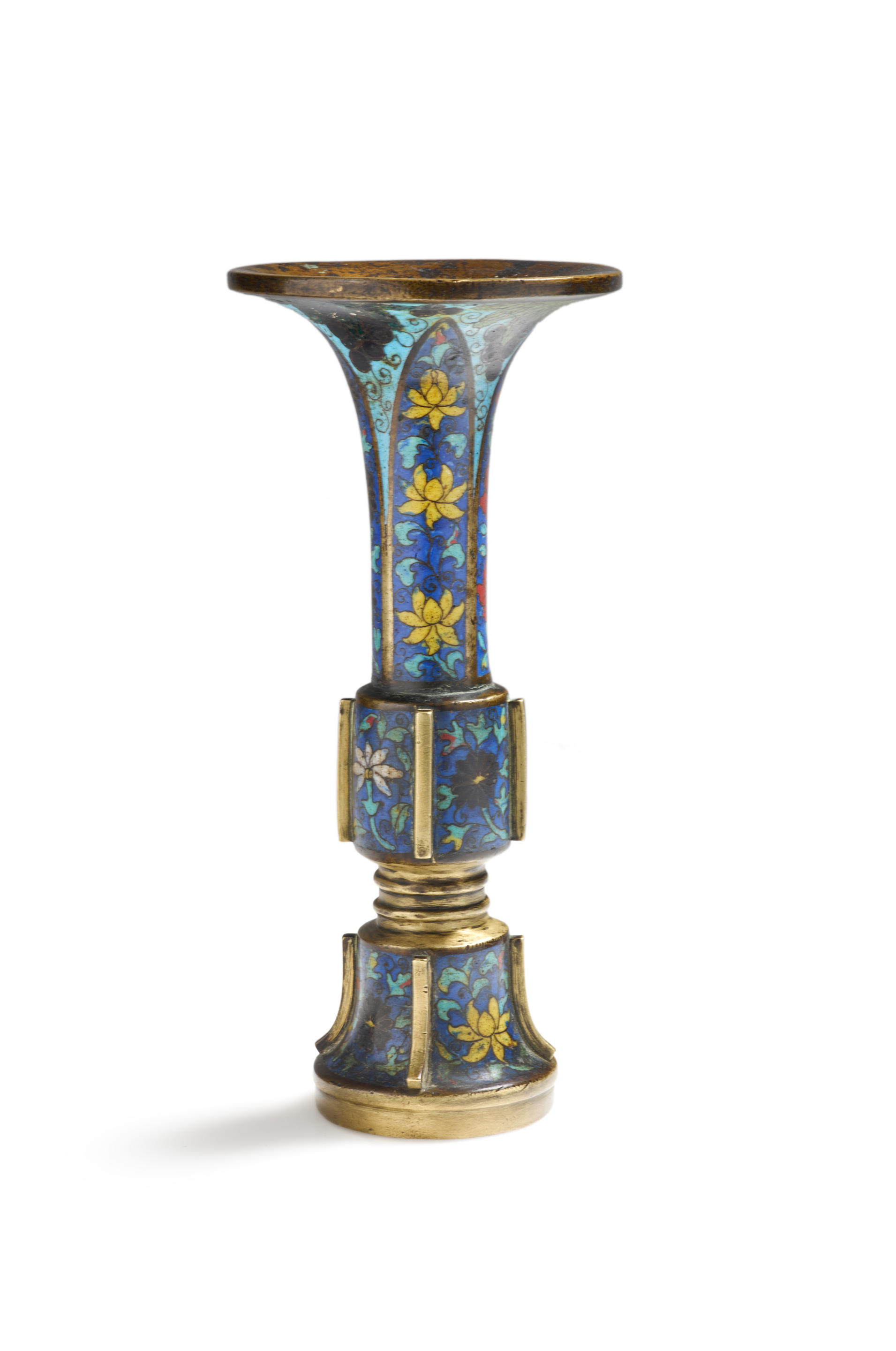
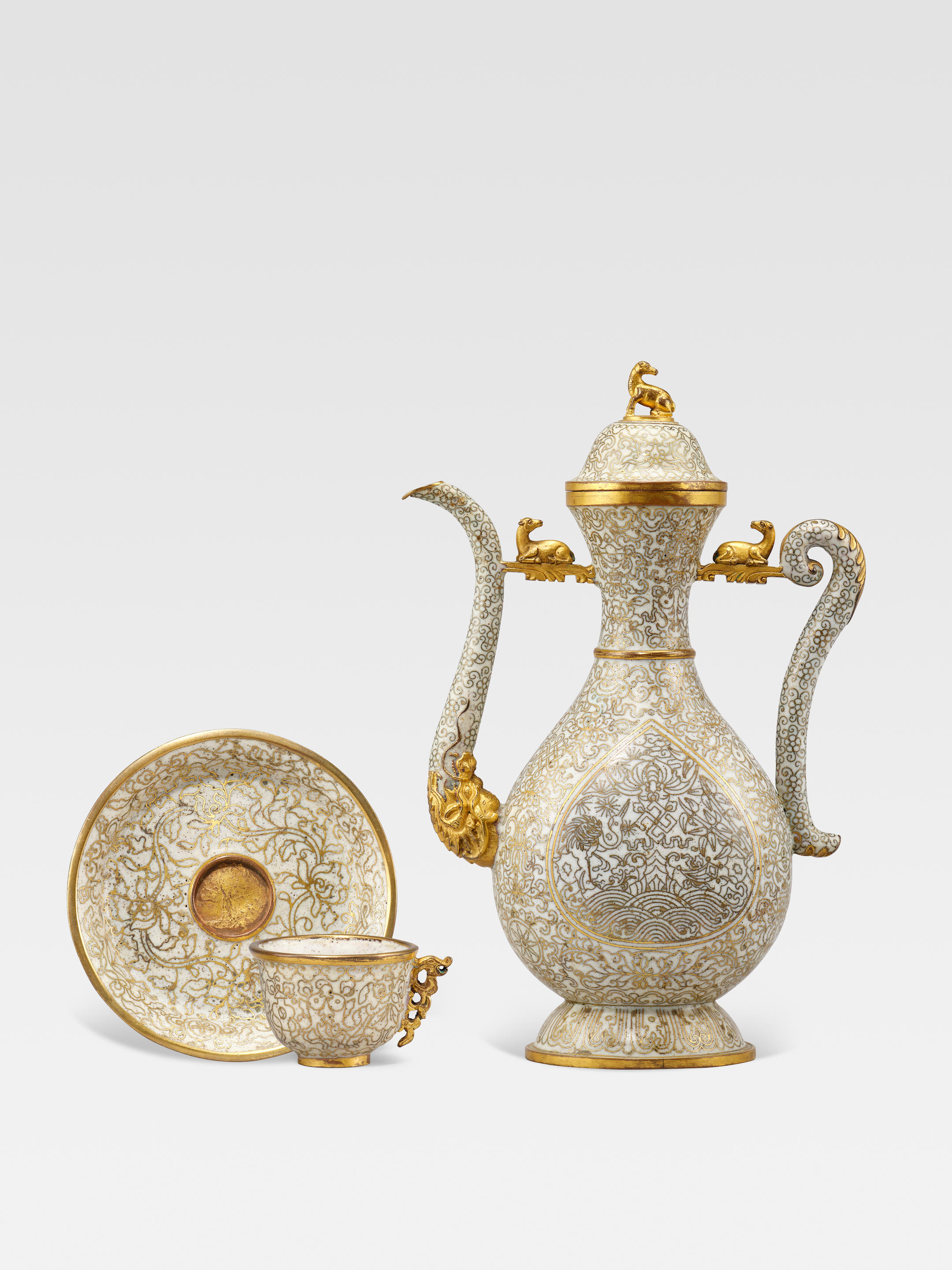
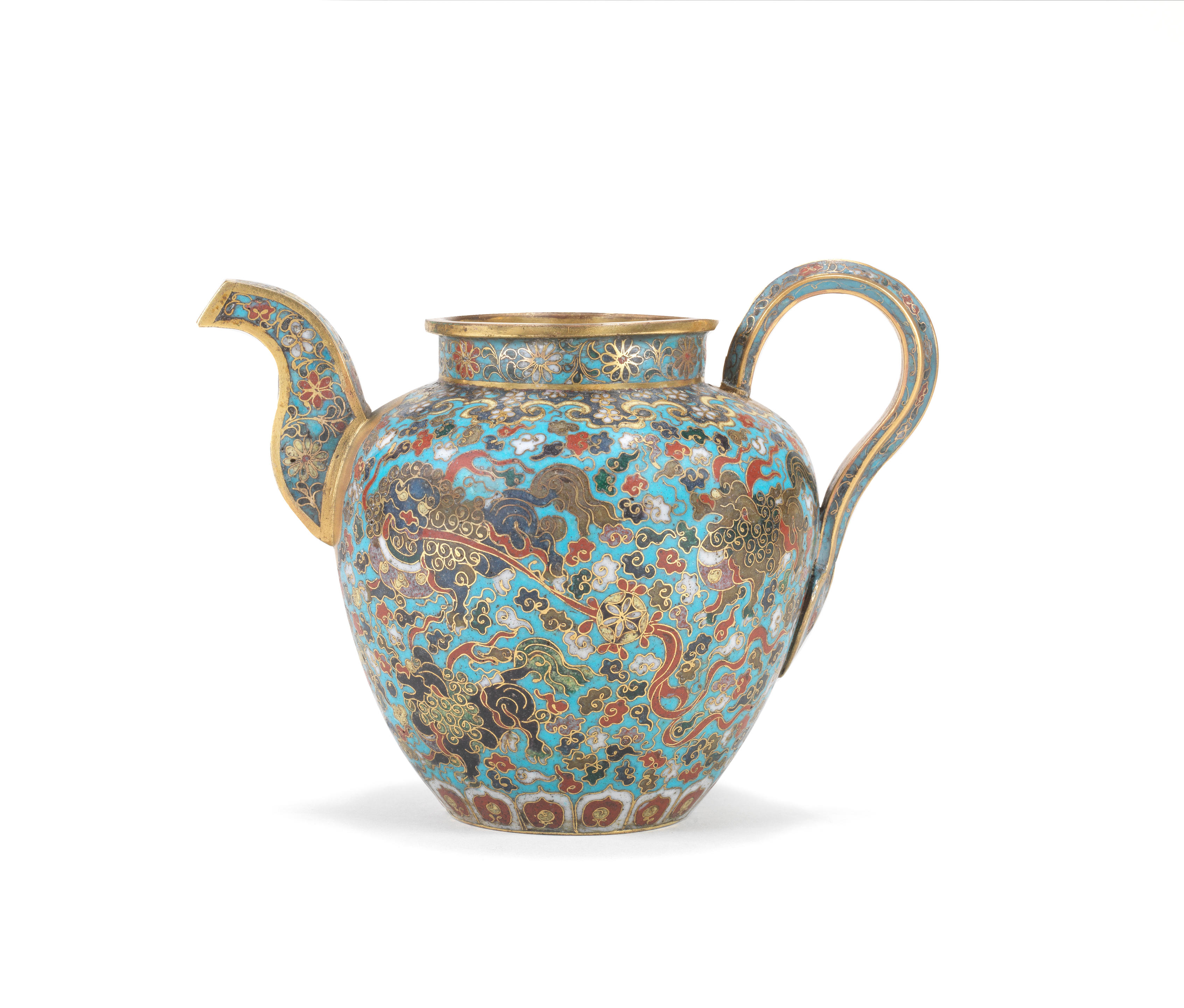
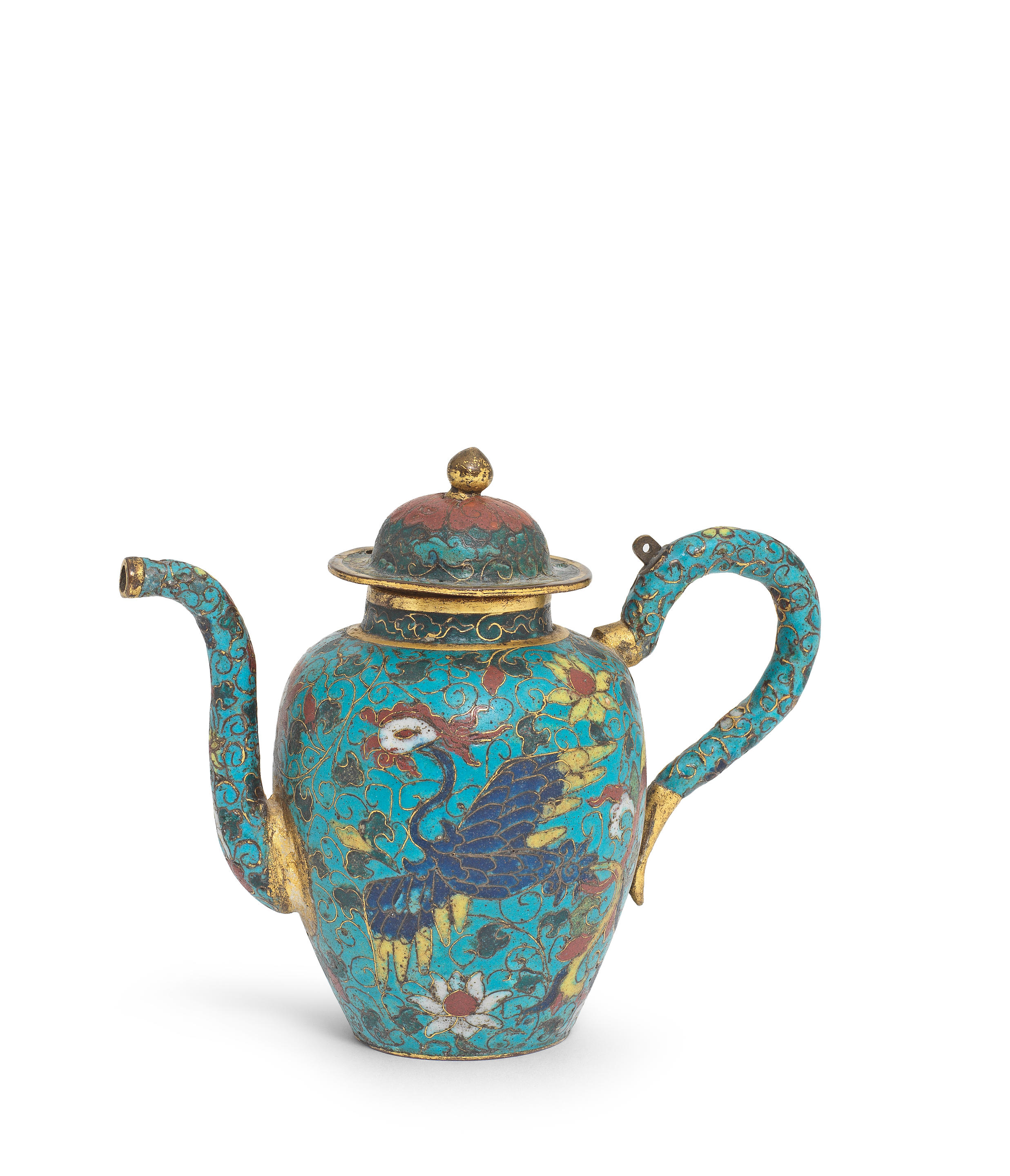
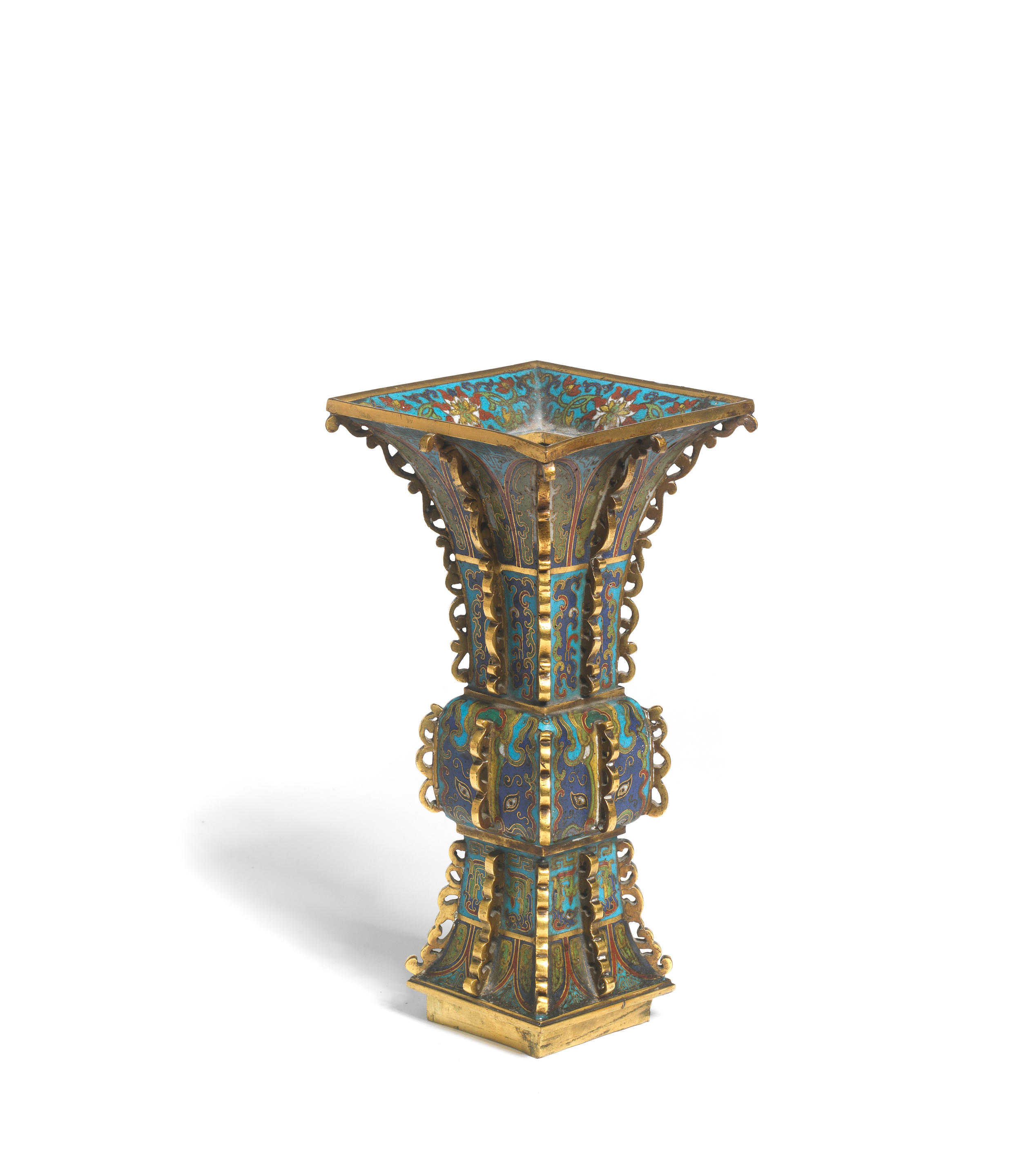

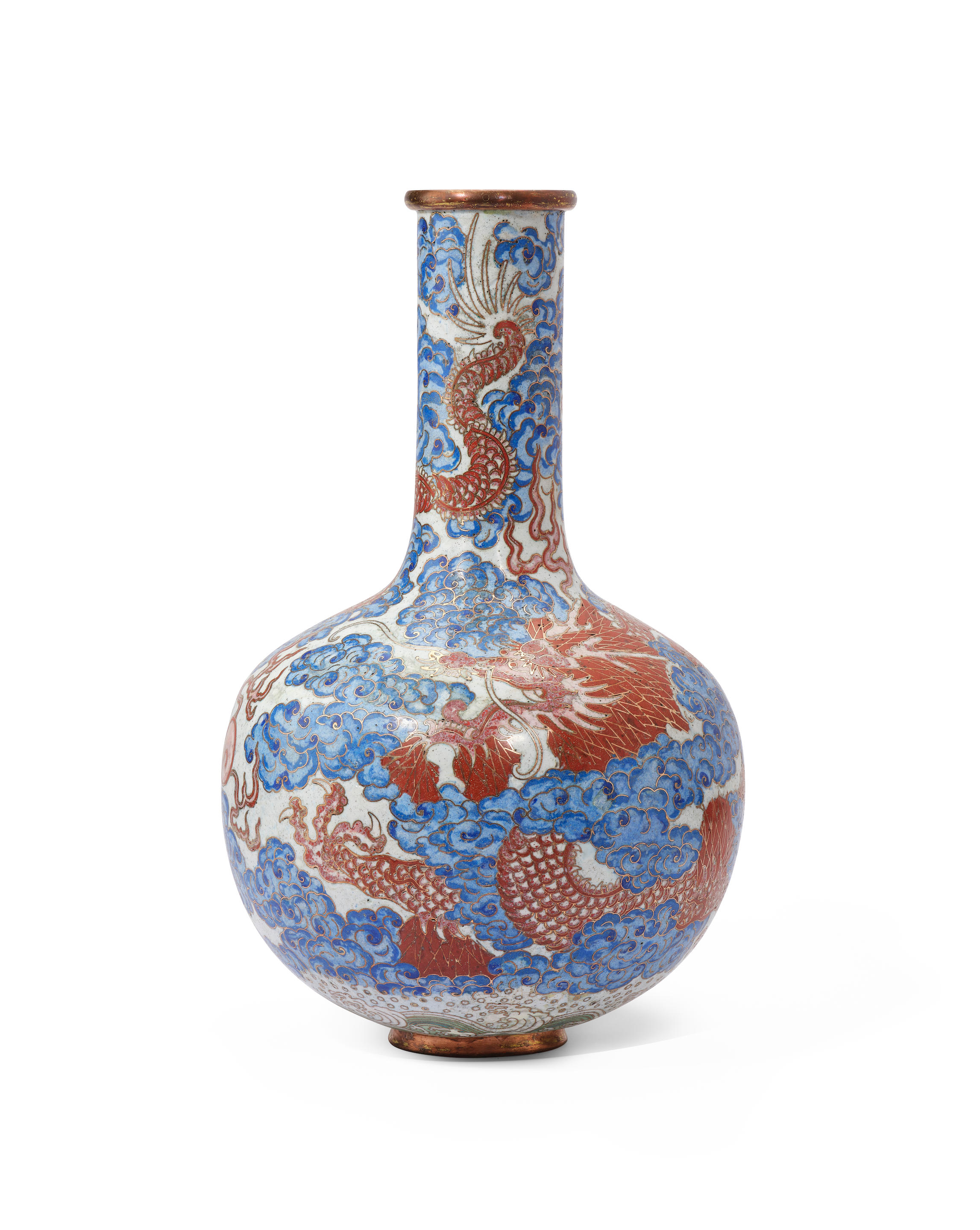
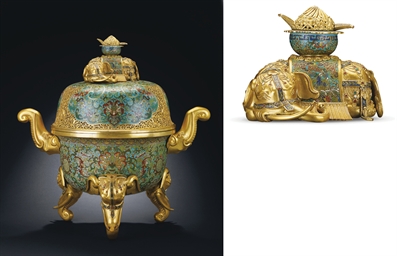
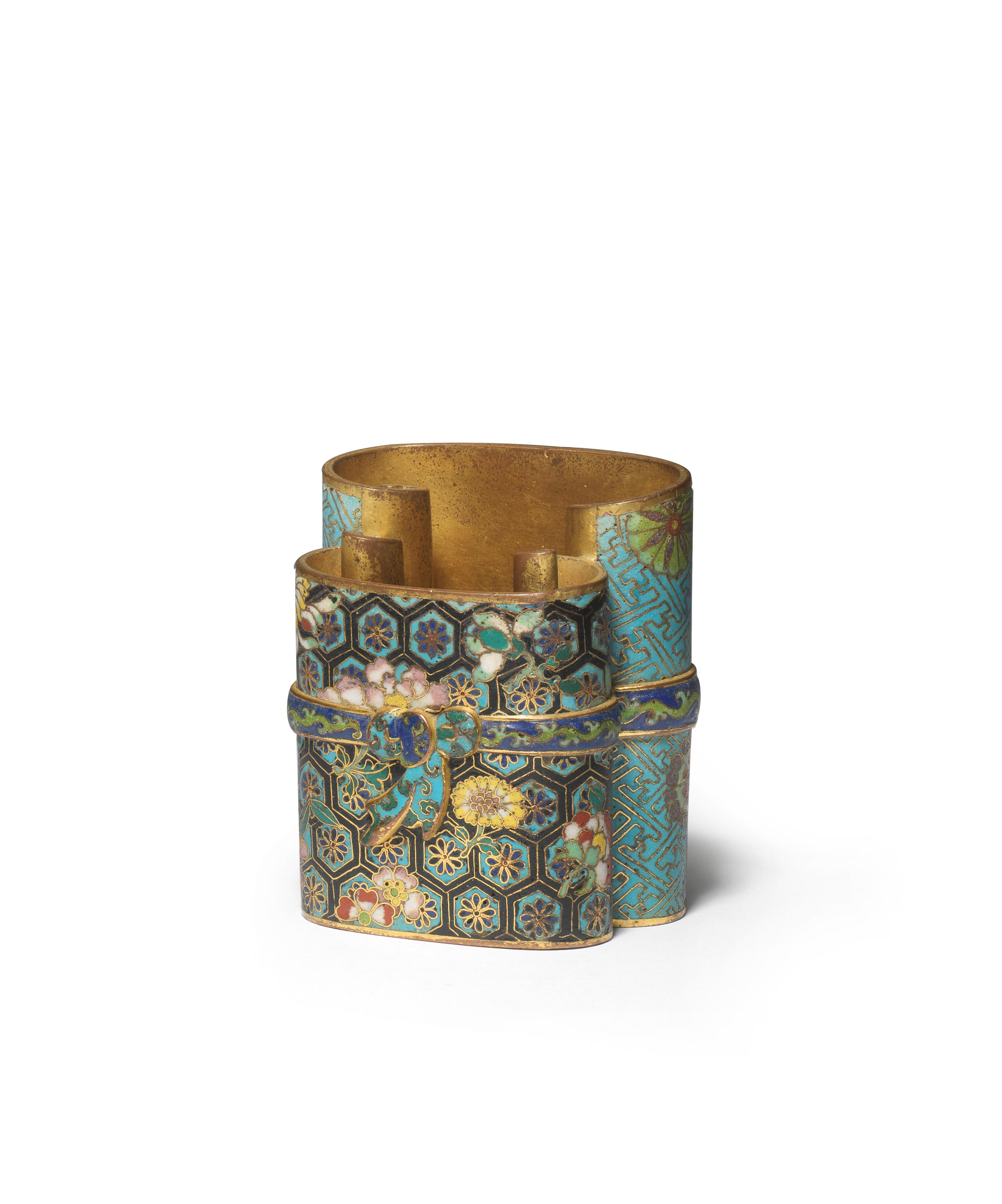
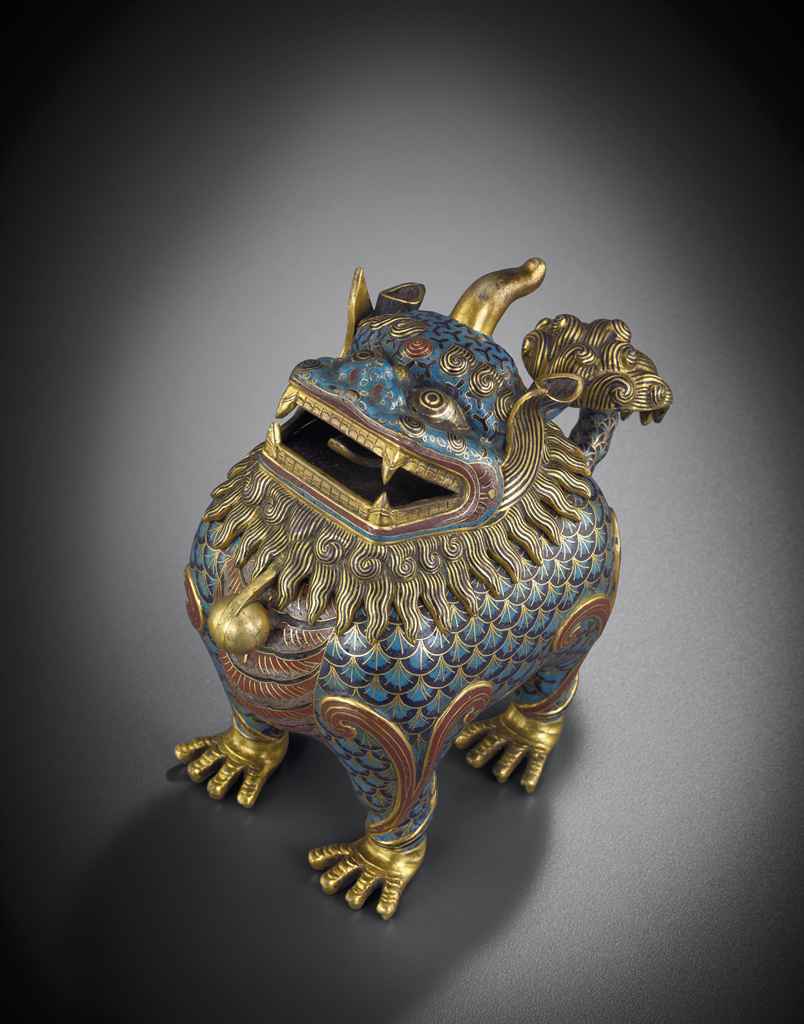
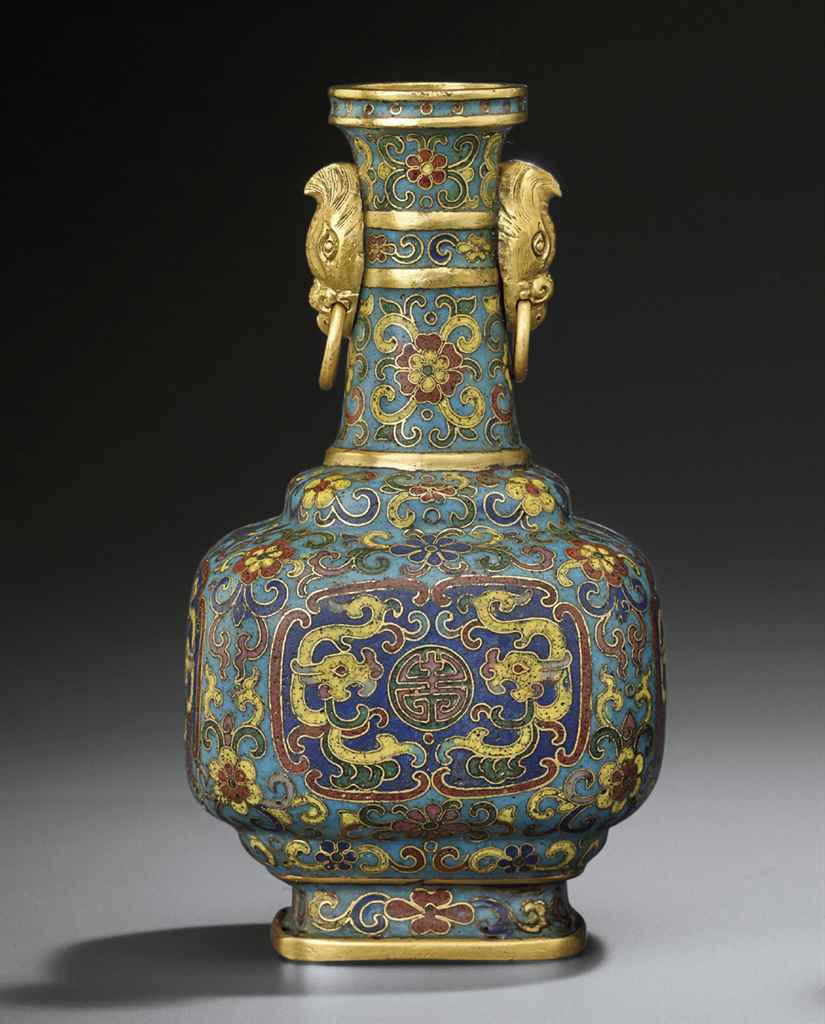
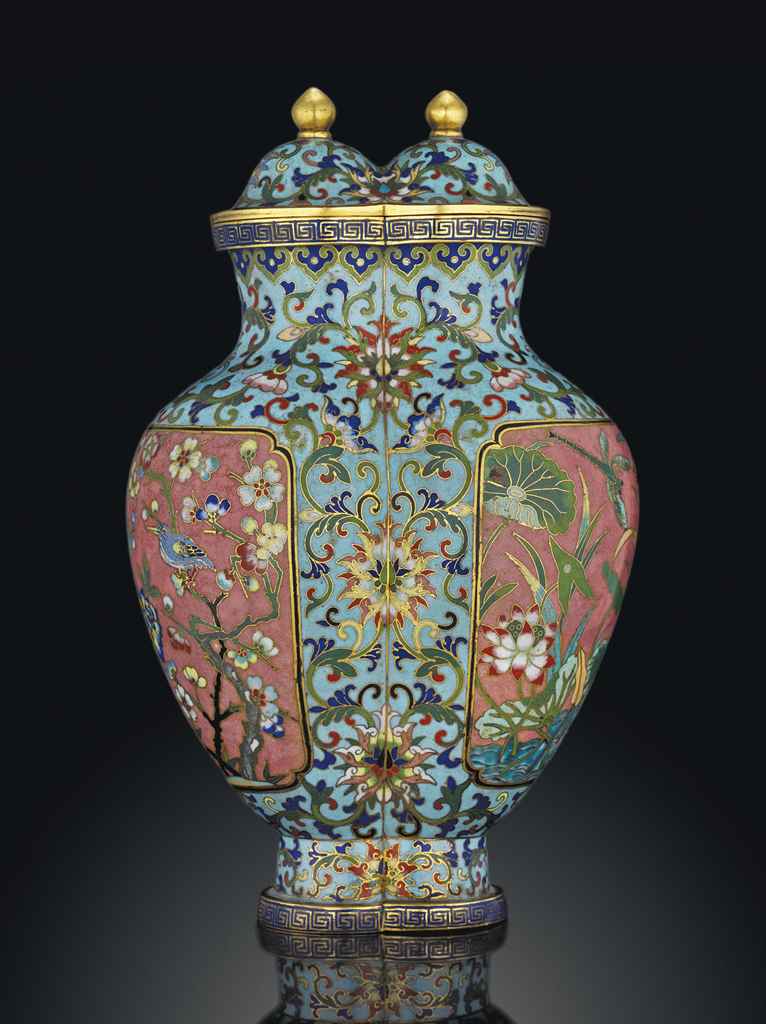
.jpg)
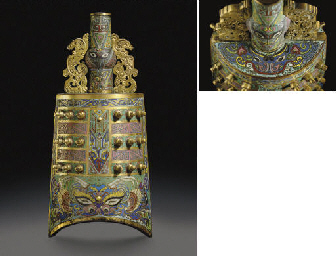
Testen Sie LotSearch und seine Premium-Features 7 Tage - ohne Kosten!
Lassen Sie sich automatisch über neue Objekte in kommenden Auktionen benachrichtigen.
Suchauftrag anlegen